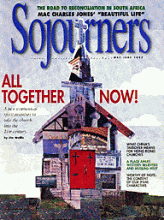Change agents often wish to make the church over in an ideal image, and prematurely herald new Pentecosts. The disappointment can be crushing, as in the case of William Seymour, the African-American progenitor of the 20th-century pentecostal revival, who died of an abandoned and broken heart in 1922.
In its initial charismatic phase, the movement, which flowered in 1906 in the Los Angeles borderlands of geography, race, gender, and class, blurred the strict demarcations of the first three categories--flowing freely back and forth across the U.S.-Mexico border; mocking Jim Crow and "washing away" the new centurys "color line"; eschewing Victorian propriety for the ministry and leadership of women, ecstatic worship, and the scandalous multiracial embrace of bodies--and represented a protest of the "disinherited" against the fourth.
The inevitable institutionalization of the movement streamlined the religious anarchy into more recognizable parameters and patterns of the status quo of early and mid-20th-century America. Thus, pentecostalism conformed to the surrounding mores, fell into patterns of racial (and doctrinal) cleavage, and extinguished a prophetic candle against the growing shadows of Jim Crow. Like the historic black churches, African-American and some Latino pentecostals (particularly Apostolics) were left to fend for themselves. In spite of the shortcomings, the revival contributed mightily to the renewal and growth of the church across the globe.
Read the Full Article

